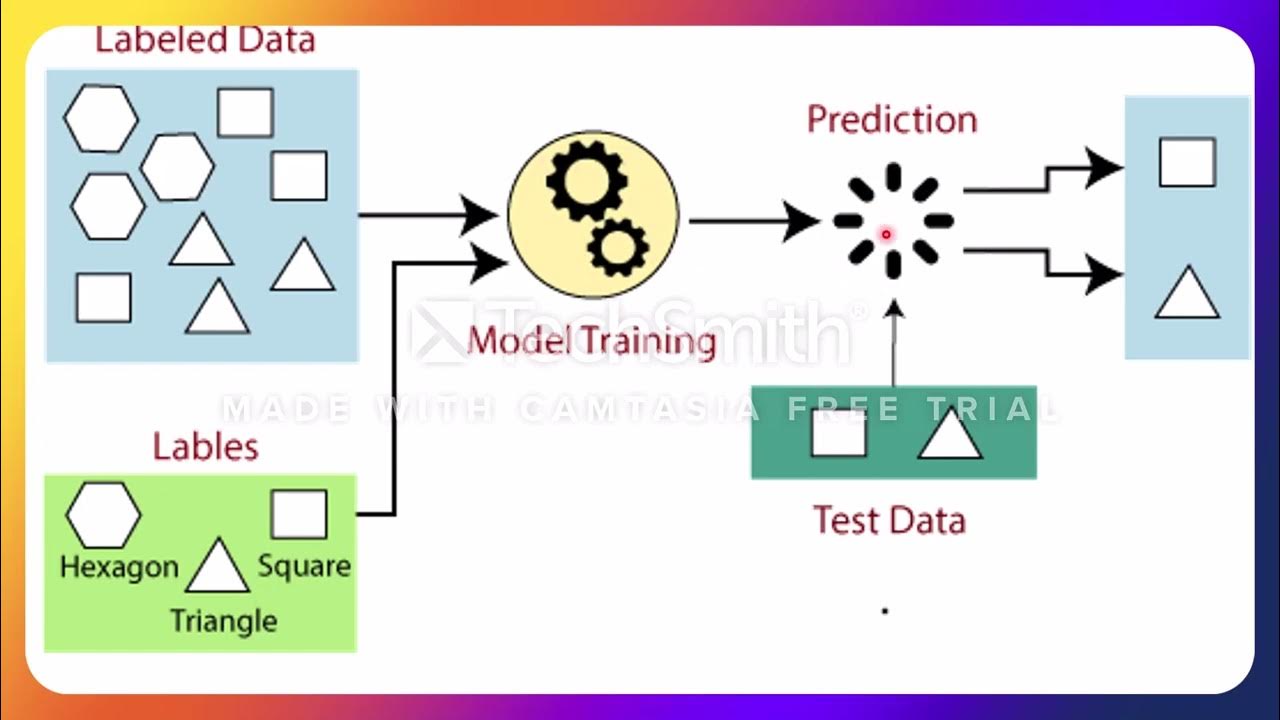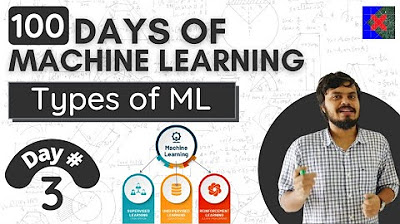#4 Machine Learning Specialization [Course 1, Week 1, Lesson 2]
Summary
TLDRThe video script discusses the economic impact of machine learning, focusing on supervised learning as the primary driver of its value. It explains how algorithms learn from input-output pairs to make predictions, with examples ranging from spam filters and speech recognition to online advertising and self-driving cars. The script also delves into regression, a type of supervised learning, using housing prices as an example to illustrate how algorithms fit lines or curves to data to predict outcomes.
Takeaways
- 🧠 Supervised learning is the primary driver of economic value in machine learning today, accounting for 99% of the value created.
- 🔗 Supervised learning involves algorithms that learn mappings from inputs (X) to outputs (Y), using labeled examples.
- 📧 Examples of supervised learning include spam filters, speech recognition, machine translation, and online advertising algorithms.
- 💰 Online advertising is one of the most lucrative applications of supervised learning, as it directly impacts revenue through ad click predictions.
- 🚗 Applications like self-driving cars use supervised learning to interpret sensor data and make driving decisions.
- 🔍 In manufacturing, supervised learning is used for visual inspection to detect defects in products post-production.
- 🏠 Predicting housing prices based on size is an example of regression, a type of supervised learning where the goal is to predict a numerical value.
- 📈 Fitting a straight line or a curve to data is a method used in regression to make predictions, with the choice depending on the data's complexity.
- 📊 The script illustrates the process of training a model with labeled data and then using it to predict outcomes for new, unseen data.
- 🔑 Terminology: Supervised learning includes both regression (predicting numbers) and classification (predicting categories).
- 🔮 The script hints at future content that will cover how to choose the right model complexity for fitting data in supervised learning tasks.
Q & A
What is the predominant type of machine learning creating economic value today?
-The predominant type of machine learning creating economic value today is supervised learning, which accounts for 99% of the economic value created by machine learning.
What is the key characteristic of supervised learning?
-The key characteristic of supervised learning is that it provides the learning algorithm with examples that include the correct label (y) for a given input (X), allowing the algorithm to learn from these pairs to make predictions.
Can you give an example of supervised learning in the context of email?
-An example of supervised learning in the context of email is a spam filter, where the algorithm learns to classify emails as spam or not spam based on input examples and their corresponding labels.
What is speech recognition in the context of supervised learning?
-In the context of supervised learning, speech recognition is the task where the algorithm takes an audio clip as input and outputs the corresponding text transcript.
How is supervised learning applied in machine translation?
-In machine translation, supervised learning is applied by training the algorithm with input-output pairs of different languages, allowing it to translate text from one language to another.
What role does supervised learning play in online advertising?
-In online advertising, supervised learning is used to predict whether a user will click on an ad based on information about the ad and the user, which drives revenue for ad platforms.
Can you explain the concept of visual inspection in manufacturing using supervised learning?
-Visual inspection in manufacturing using supervised learning involves training an algorithm with images of manufactured products and their defect labels, enabling the algorithm to identify defects in new products.
What is the purpose of training a model with input-output pairs in supervised learning?
-The purpose of training a model with input-output pairs in supervised learning is to enable the model to learn the relationship between inputs and outputs, so it can make accurate predictions on new, unseen inputs.
Can you provide an example of a regression problem in supervised learning?
-An example of a regression problem in supervised learning is predicting housing prices based on the size of a house, where the algorithm tries to find a function that best fits the data and predicts the price.
What is the difference between regression and classification in the context of supervised learning?
-In supervised learning, regression is used to predict a continuous value (e.g., house prices), while classification is used to predict discrete labels (e.g., spam or not spam).
How does the learning algorithm decide the complexity of the function to fit to the data in a regression problem?
-The learning algorithm systematically chooses the most appropriate function to fit the data based on the training examples, considering factors like overfitting and underfitting to achieve the best prediction performance.
Outlines

このセクションは有料ユーザー限定です。 アクセスするには、アップグレードをお願いします。
今すぐアップグレードMindmap

このセクションは有料ユーザー限定です。 アクセスするには、アップグレードをお願いします。
今すぐアップグレードKeywords

このセクションは有料ユーザー限定です。 アクセスするには、アップグレードをお願いします。
今すぐアップグレードHighlights

このセクションは有料ユーザー限定です。 アクセスするには、アップグレードをお願いします。
今すぐアップグレードTranscripts

このセクションは有料ユーザー限定です。 アクセスするには、アップグレードをお願いします。
今すぐアップグレード5.0 / 5 (0 votes)






